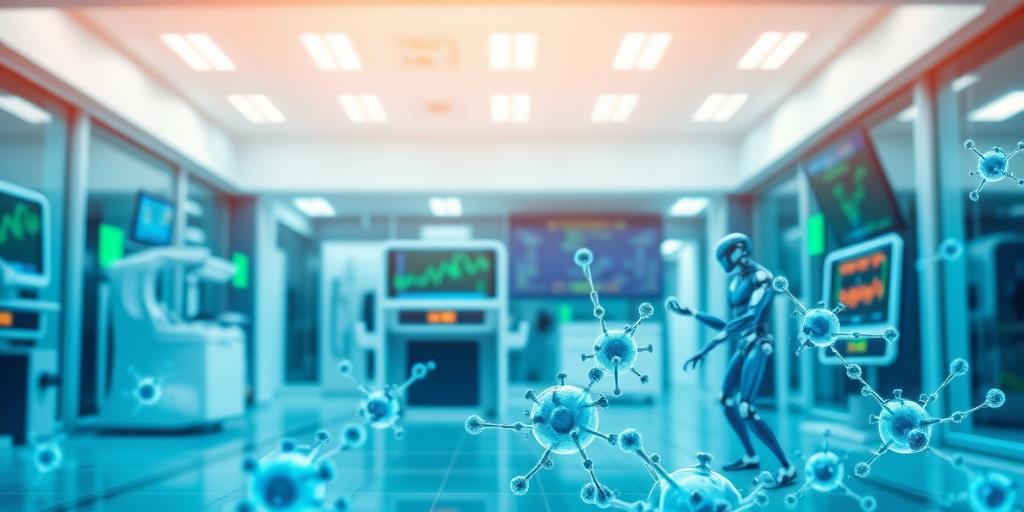Nanotechnology, the manipulation of matter at the atomic and molecular scale, is rapidly transforming various fields, and medicine is no exception. By 2025, nanotechnology has matured into a pivotal force in both diagnostic and therapeutic applications, offering unprecedented precision and efficacy.
Diagnostic Applications of Nanotechnology
Nanotechnology enhances diagnostic accuracy through several key innovations:
- Nanoparticle-Based Imaging: Nanoparticles, such as quantum dots and iron oxide nanoparticles, are used as contrast agents in medical imaging techniques like MRI, CT scans, and PET scans. These nanoparticles accumulate in specific tissues or cells, providing enhanced resolution and sensitivity for detecting diseases at early stages. For example, targeted nanoparticles can identify cancerous cells with greater accuracy than traditional methods.
- Biosensors: Nanosensors are designed to detect biomarkers associated with various diseases. These sensors can be integrated into portable devices for point-of-care diagnostics, enabling rapid and convenient testing. For instance, nanosensors can detect specific proteins or DNA sequences indicative of infections or genetic disorders.
- Microfluidic Devices: Nanotechnology facilitates the development of microfluidic devices, also known as lab-on-a-chip systems. These devices can perform complex diagnostic tests using minimal sample volumes, reducing costs and turnaround times. They are particularly useful in analyzing blood samples for a range of parameters, from glucose levels to viral loads.
Therapeutic Applications of Nanotechnology
In therapeutics, nanotechnology enables targeted drug delivery and innovative treatment modalities:
- Targeted Drug Delivery: Nanoparticles can be engineered to encapsulate drugs and deliver them directly to diseased cells, minimizing side effects and maximizing therapeutic efficacy. This approach is particularly beneficial in cancer treatment, where chemotherapeutic drugs can be targeted specifically to tumor cells, sparing healthy tissues.
- Gene Therapy: Nanoparticles are used as vectors to deliver genes into cells, offering potential cures for genetic disorders. These nanoparticles can protect the therapeutic genes from degradation and facilitate their entry into the target cells, enabling long-term correction of genetic defects.
- Regenerative Medicine: Nanomaterials provide scaffolds for tissue engineering, promoting cell growth and tissue regeneration. These scaffolds can be customized to mimic the structure and function of natural tissues, facilitating the repair of damaged organs and tissues. For example, nanostructured scaffolds can support the growth of new bone tissue in patients with fractures or bone defects.
- Photothermal Therapy: Nanoparticles that absorb light can be used to selectively destroy cancer cells through photothermal therapy. These nanoparticles accumulate in tumors and generate heat when exposed to near-infrared light, leading to localized cell death without harming surrounding tissues.
Challenges and Future Directions
Despite the significant advancements, nanotechnology in medicine faces several challenges:
- Toxicity: Ensuring the biocompatibility and minimizing the toxicity of nanomaterials is crucial. Rigorous testing and development of biodegradable nanoparticles are essential to address this concern.
- Scalability: Scaling up the production of nanomaterials and nanodevices to meet clinical demands remains a challenge. Developing cost-effective and efficient manufacturing processes is necessary for widespread adoption.
- Regulatory Framework: Clear regulatory guidelines are needed to govern the development and clinical translation of nanomedicine products. Establishing standards for safety and efficacy will facilitate the approval and commercialization of these technologies.
Looking ahead, nanotechnology holds immense promise for revolutionizing medicine. Continued research and development efforts will likely lead to new diagnostic tools, more effective therapies, and personalized treatment strategies, ultimately improving patient outcomes and quality of life.
